By Fennie | 18 March 2021 | 3 Comments
Aftermarket iPhone X Series Touch Issue After Screen Replacement Explained
The following screen issues, such as flickering screen, partially unresponsive. Have they ever happened to you? Without a doubt, these touch issues such as ghost touch have occurred to many repairers who had ordered in-cell and OLED screens from China, we will analyze these issues in terms of the screen technology and the screen market.
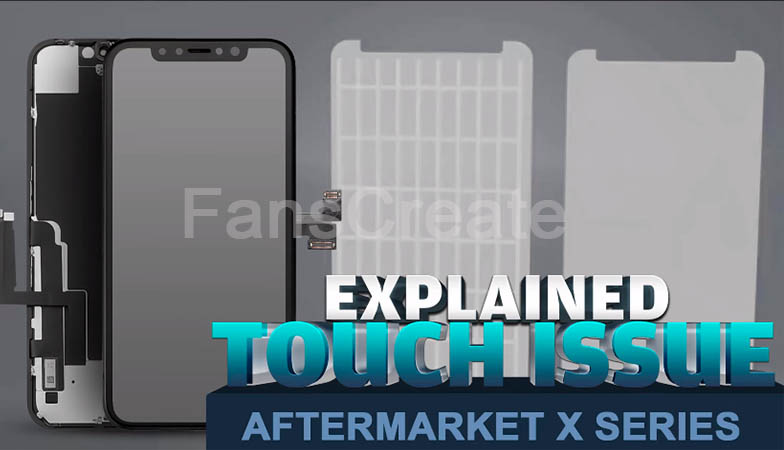
Screen touch issues
1. Total unresponsive
2. Partially Unresponsive
3. Ghost touch
The newly installed screen ghost touch? Can't touch at all? Partially ghost touch or unresponsive? Hard to understand, the touch issues happen a few days later after screen replacement. Let's check those issues together.
Case 1: cannot touch at all
It is probably caused by improper installation. Check the flex connector, ensure that they have been connected well. And check the flex cables, ensure that they have not been damaged. Then install the screen again.
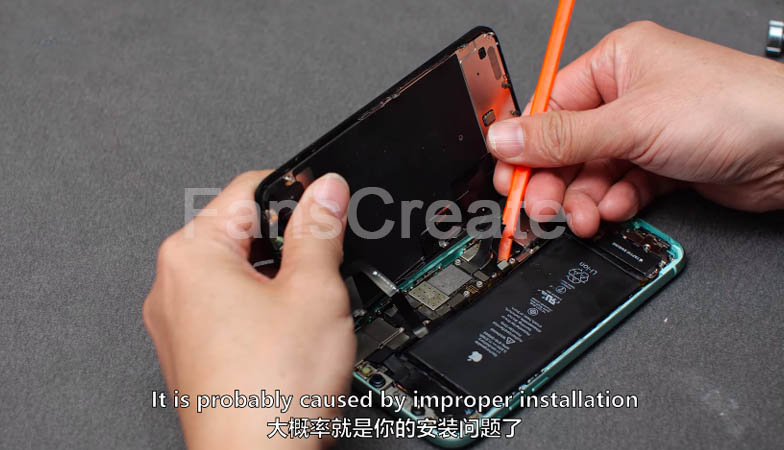
Case 2: partial unresponsive
Mostly, the screen itself has a quality issue. It is advisable for you to install a new screen.
Case 3: Ghost touch
The screen is ghost touch, if not EDS or improper installation. It needs both hardware and software to work.
In hardware, the original screen, the display is independent of the touch IC. The leading companies, such as Samsung, Taiwan Semiconductor supply IC to Apple. With the advanced 14nm and 7nm process. The IC is endowed with top computing power. The aftermarket Incell screen driver technology is TDDI. The main IC is in charge of the display driver and touch, and it is supplied by China mainland manufacturers. For well-known reasons, the IC process is lower, in most cases, 28nm-70nm. The lower process would lead to lower performance.
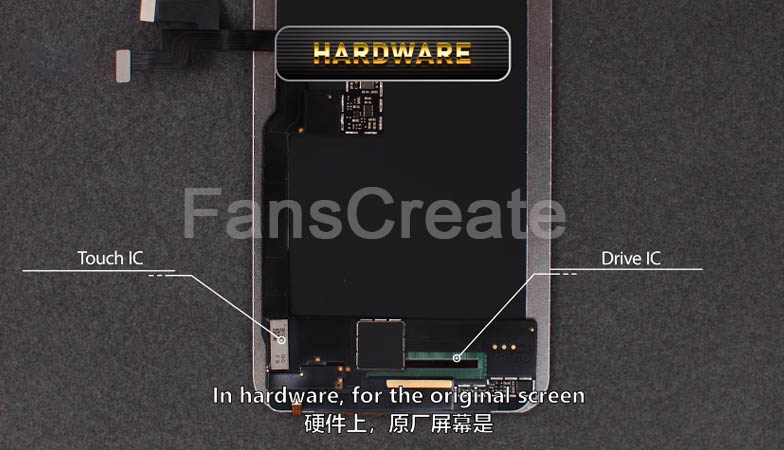
In software, the driver IC software volume of the new iPhone. The aftermarket low-process IC has insufficient computing power for complex software data. Hence the auxiliary IC is employed for assisting computing. Generally speaking, there are the following hardware and software solutions in the aftermarket.
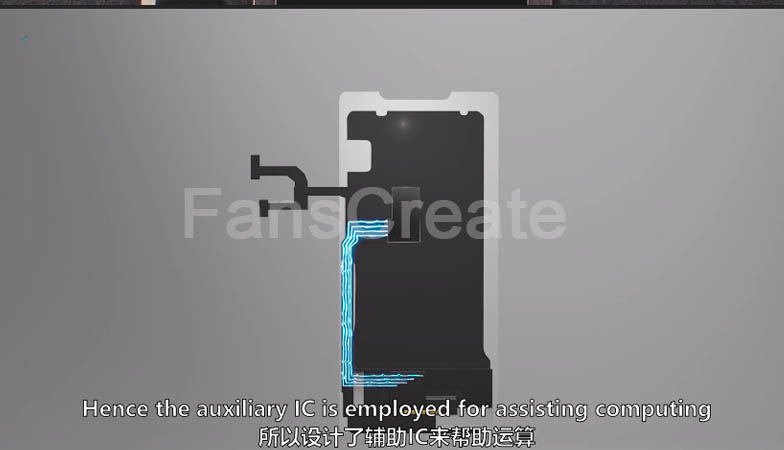
A. Dual-layer circuits scheme. That is, it employs lithographic dual-layer flex circuits. The advantage is that no extra IC needed. Hence the BOM cost is lower, while the disadvantage is that the dual-layer circuits are easily overheated, so they cannot function well for a long time run.
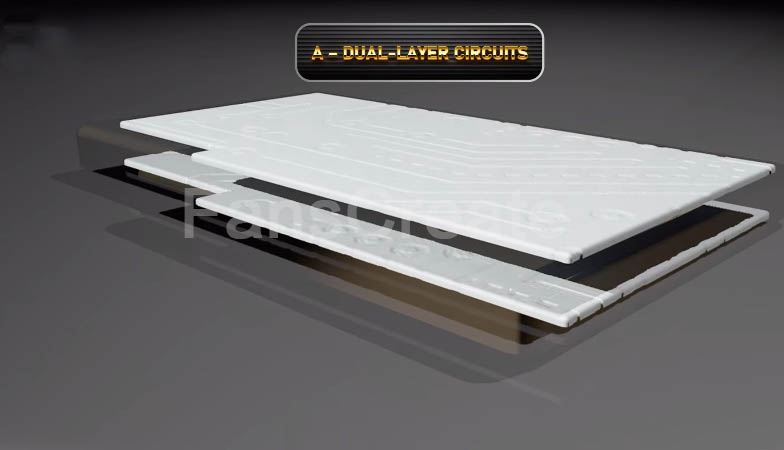
B. Double core IC. Two sets with EEPROM driver IC. The advantage is the IC quantity is doubled. The auxiliary IC plus the 28nm main IC, have the same computing power as the original 14nm IC, thus could compute big software data.
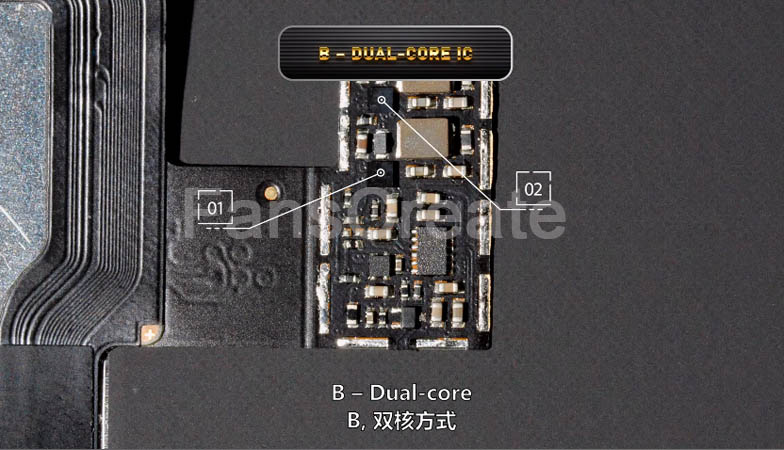
C. One core. Only one set with EEPROM driver IC. Though it has less computing power than 14nm IC. However, the added auxiliary IC can help a little. Still, the computing power is not high enough. And overheating also could happen, thus affect stability.
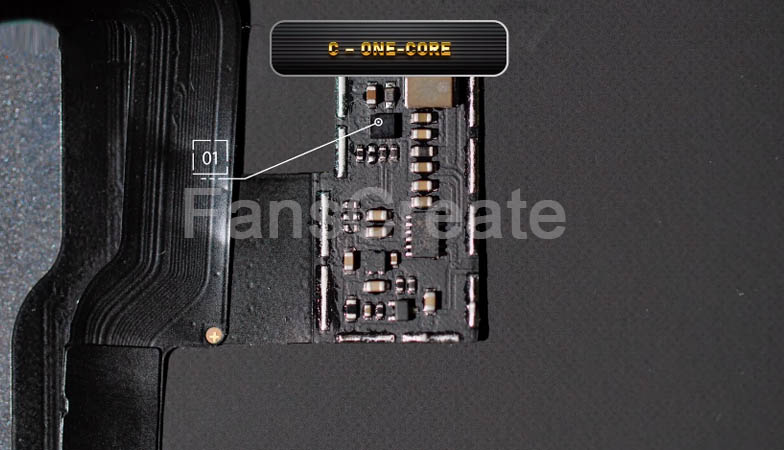
D. Rewrite software. Simplify the driver software. The advantage is to simplify the software from the bottom layer. Theoretically, the smaller the software, the more smoothly. However, since iPhone X, the original software has been encrypted, very hard to hack. The aftermarket software employs reversed research and development. It has lots of software bugs, lacks stability. Learn from numerous experiences, we find out that: For hardware, two sets with EEPROM driver IC is the best choice. Apparently, the cost is higher because more materials are needed. Since the IC is lacked materials in 2020. The dual-core screen keeps on employing more materials, so the difficulty is the shortage of materials and delayed supply.
Touch conclusion
Two reasons for the quality issue. One is careless QC, the poor-quality screen has not been removed. The other is the over-high brightness. To improve the display performance. Some manufacturers employ over-ghit power backlight units, as a result, the screens get serious heating issues. Lack of stability and endurance, thus damage the in-cell touch circuits. The screen touch is partially unresponsive or cannot function forever. Back to EDDI Incell screen, it should employ suitable power backlight units to avoid touch issues because of over-high brightness. And we advise against choosing the screen with over-high brightness.
Installing tips
Meanwhile, we give the following installation tips. Touch a metal object, it can reduce the ESD or wear an anti-static wrist strap to reduce the ESD
You may be interested in:
iPhone X Ear Speaker Not Working Repair - Jumping Wire Solution
How To Fix Apple Wallet Payment Failure
iPhone 11 Touch Screen Not Working

Screen touch issues
1. Total unresponsive
2. Partially Unresponsive
3. Ghost touch
The newly installed screen ghost touch? Can't touch at all? Partially ghost touch or unresponsive? Hard to understand, the touch issues happen a few days later after screen replacement. Let's check those issues together.
Case 1: cannot touch at all
It is probably caused by improper installation. Check the flex connector, ensure that they have been connected well. And check the flex cables, ensure that they have not been damaged. Then install the screen again.

Case 2: partial unresponsive
Mostly, the screen itself has a quality issue. It is advisable for you to install a new screen.
Case 3: Ghost touch
The screen is ghost touch, if not EDS or improper installation. It needs both hardware and software to work.
In hardware, the original screen, the display is independent of the touch IC. The leading companies, such as Samsung, Taiwan Semiconductor supply IC to Apple. With the advanced 14nm and 7nm process. The IC is endowed with top computing power. The aftermarket Incell screen driver technology is TDDI. The main IC is in charge of the display driver and touch, and it is supplied by China mainland manufacturers. For well-known reasons, the IC process is lower, in most cases, 28nm-70nm. The lower process would lead to lower performance.

In software, the driver IC software volume of the new iPhone. The aftermarket low-process IC has insufficient computing power for complex software data. Hence the auxiliary IC is employed for assisting computing. Generally speaking, there are the following hardware and software solutions in the aftermarket.

A. Dual-layer circuits scheme. That is, it employs lithographic dual-layer flex circuits. The advantage is that no extra IC needed. Hence the BOM cost is lower, while the disadvantage is that the dual-layer circuits are easily overheated, so they cannot function well for a long time run.

B. Double core IC. Two sets with EEPROM driver IC. The advantage is the IC quantity is doubled. The auxiliary IC plus the 28nm main IC, have the same computing power as the original 14nm IC, thus could compute big software data.

C. One core. Only one set with EEPROM driver IC. Though it has less computing power than 14nm IC. However, the added auxiliary IC can help a little. Still, the computing power is not high enough. And overheating also could happen, thus affect stability.

D. Rewrite software. Simplify the driver software. The advantage is to simplify the software from the bottom layer. Theoretically, the smaller the software, the more smoothly. However, since iPhone X, the original software has been encrypted, very hard to hack. The aftermarket software employs reversed research and development. It has lots of software bugs, lacks stability. Learn from numerous experiences, we find out that: For hardware, two sets with EEPROM driver IC is the best choice. Apparently, the cost is higher because more materials are needed. Since the IC is lacked materials in 2020. The dual-core screen keeps on employing more materials, so the difficulty is the shortage of materials and delayed supply.
Touch conclusion
Two reasons for the quality issue. One is careless QC, the poor-quality screen has not been removed. The other is the over-high brightness. To improve the display performance. Some manufacturers employ over-ghit power backlight units, as a result, the screens get serious heating issues. Lack of stability and endurance, thus damage the in-cell touch circuits. The screen touch is partially unresponsive or cannot function forever. Back to EDDI Incell screen, it should employ suitable power backlight units to avoid touch issues because of over-high brightness. And we advise against choosing the screen with over-high brightness.
Installing tips
Meanwhile, we give the following installation tips. Touch a metal object, it can reduce the ESD or wear an anti-static wrist strap to reduce the ESD
You may be interested in:
iPhone X Ear Speaker Not Working Repair - Jumping Wire Solution
How To Fix Apple Wallet Payment Failure
iPhone 11 Touch Screen Not Working
Recently Reviews
Read MoreLeave a Reply
Your email address will not be published.Required fields are marked. *
POPULAR BLOG
- How to Fix iPhone Xr Dim Backlight - Repair With New Backlight Module
- Aftermarket iPhone X Series Touch Issue After Screen Replacement Explained
- How to Fix iPhone X Ear Speaker No Working - Jump Wire Solution
- How to Fix iPhone With A Screw - Apple Wallet Payment Failure
- How to Fix iPhone 11 Touch Screen Not Working - Step by Step
ARCHIVES
CATEGORIES